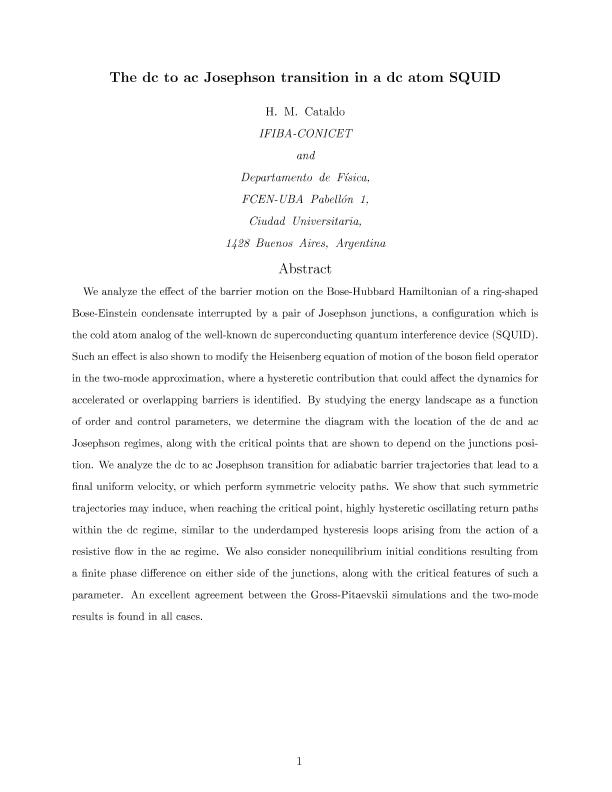Artículo
Dc to ac Josephson transition in a dc atom superconducting quantum interference device
Fecha de publicación:
08/2020
Editorial:
American Physical Society
Revista:
Physical Review A: Atomic, Molecular and Optical Physics
ISSN:
2469-9926
e-ISSN:
2469-9934
Idioma:
Inglés
Tipo de recurso:
Artículo publicado
Clasificación temática:
Resumen
We analyze the effect of the barrier motion on the Bose-Hubbard Hamiltonian of a ring-shaped Bose-Einstein condensate interrupted by a pair of Josephson junctions, a configuration which is the cold-atom analog of the well-known dc superconducting quantum interference device (SQUID). Such an effect is also shown to modify the Heisenberg equation of motion of the boson field operator in the two-mode approximation, where a hysteretic contribution that could affect the dynamics for accelerated or overlapping barriers is identified. By studying the energy landscape as a function of order and control parameters, we determine the diagram with the location of the dc and ac Josephson regimes, along with the critical points that are shown to depend on the junction's position. We analyze the dc to ac Josephson transition for adiabatic barrier trajectories that lead to a final uniform velocity, or which perform symmetric velocity paths. We show that such symmetric trajectories may induce, when reaching the critical point, highly hysteretic oscillating return paths within the dc regime, similar to the underdamped hysteresis loops arising from the action of a resistive flow in the ac regime. We also consider nonequilibrium initial conditions resulting from a finite phase difference on either side of the junctions, along with the critical features of such a parameter. An excellent agreement between the Gross-Pitaevskii simulations and the two-mode results is found in all cases.
Palabras clave:
ULTRACOLD GASES
,
JOSEPHSON JUNCTIONS
,
ATOM SQUID
,
HYSTERESIS
Archivos asociados
Licencia
Identificadores
Colecciones
Articulos(IFIBA)
Articulos de INST.DE FISICA DE BUENOS AIRES
Articulos de INST.DE FISICA DE BUENOS AIRES
Citación
Cataldo, Horacio Maximo; Dc to ac Josephson transition in a dc atom superconducting quantum interference device; American Physical Society; Physical Review A: Atomic, Molecular and Optical Physics; 102; 2; 8-2020; 1-35
Compartir
Altmétricas




